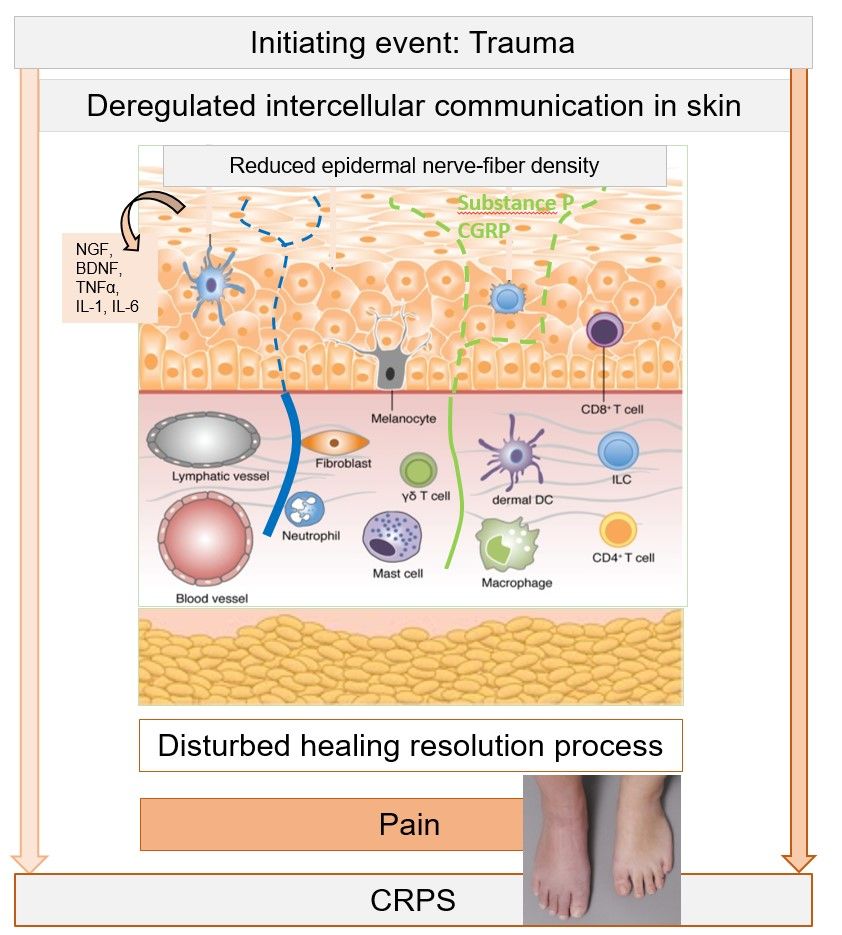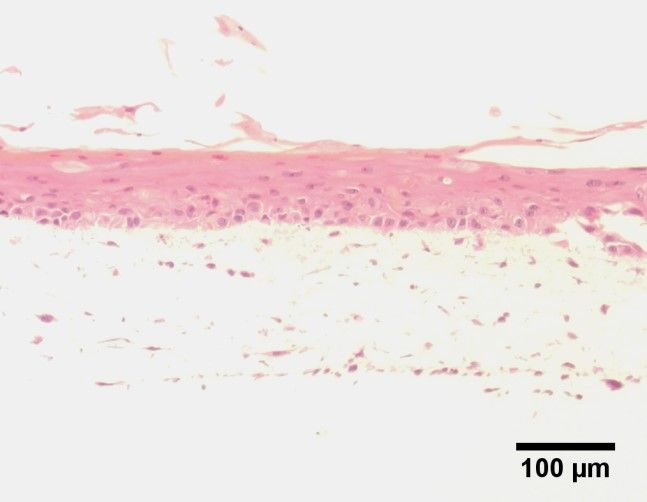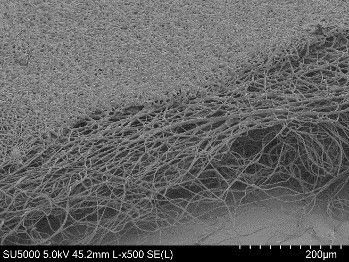CRPS and 3D-Skin model
Complex regional pain syndrome (CRPS) is a condition of extreme pain affecting a part of the body with clinical features including chronic inflammation, sensory and motor dysfunctions and changes to skin and bones. Symptoms usually appear after trauma or surgery.
Complex regional pain syndrome (CRPS)
Complex regional pain syndrome (CRPS) is a condition of extreme pain affecting a part of the body with clinical features including chronic inflammation, sensory and motor dysfunctions and changes to skin and bones. Symptoms usually appear after trauma or surgery.
Dudli-LabLater in the chronic phase, signs of central nervous system reorganization such as dystonia, body perception disturbances or sensory deficits can become apparent. At a cellular level, CRPS is characterized by inflammation, impaired innervation of sensory nerve fibers, and reduced intra epidermal nerve fiber density in the patients’ skin. Despite a fair prevalence (about 30/10,000 people), the pathogenesis of CRPS remains elusive and biomarkers are missing.
Understanding the trigger, cell types and signaling pathways that prevent a coordinated healing process in skin is crucial for identifying novel therapeutic strategies and biomarkers for early diagnostics, disease progression and treatment monitoring for CRPS.

We are a member of CRPP: www.crpp-pain.uzh.ch
Funding
- MRL Stiftung
- RSDSA Foundation
3D skin model
Current in vitro models for skin diseases are based on cell monolayers, not considering the complex interaction within the 3-dimensional architecture of organs and the interactions of cells and the environment. Consequently, we observe a rather poor predictable power of pre-clinical cell-based drug screening assays.
Current in vitro models for skin diseases are based on cell monolayers, not considering the complex interaction within the 3-dimensional architecture of organs and the interactions of cells and the environment. Consequently, we observe a rather poor predictable power of pre-clinical cell-based drug screening assays. To address this gap in drug development, researchers have become increasingly interested in culture systems in which the cells produce their own microenvironment and mimic thereby the in vivo situation.
Synthetic nanofibrous scaffolds have become apparent alternatives for 3D skin tissue engineering, especially for skin. Electrospinning of PCL creates nanofibers that show morphological similarities to native collagen fibrils in size and orientation.
Our aim is to create skin equivalents with primary skin fibroblasts and keratinocytes and stepwise multicellular systems containing endothelial cells and immune cells.

3D skin with epidermis and dermis on electrospun membranes

Electrospun membrane
Collaborations
- Markus Rimann (ZHAW)
- Karin Würtz (Rochester Institute of Technology, USA)
Funding
- Novartis Stiftung
